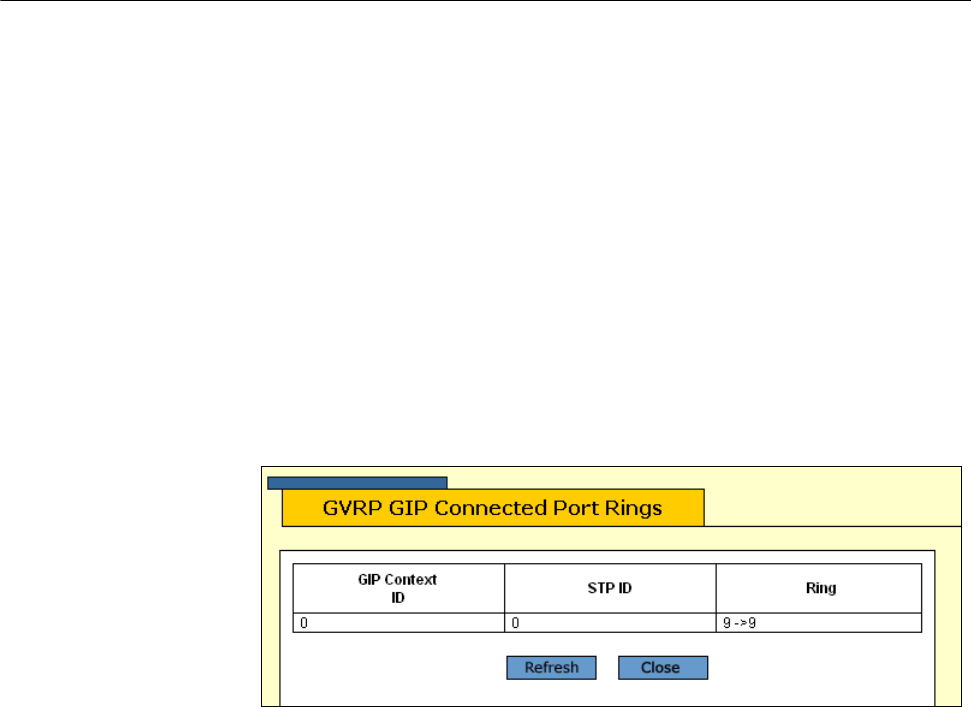User guide
Table Of Contents
- Contents
- Figures
- Tables
- Preface
- Section I
- Basic Operations
- Chapter 1
- Basic Switch Parameters
- Configuring the Switch’s Name, Location, and Contact
- Changing the Manager and Operator Passwords
- Setting the System Date and Time
- Rebooting a Switch
- Pinging a Remote System
- Returning the AT-S63 Management Software to the Factory Default Values
- Displaying the IP Address of the Local Interface
- Displaying System Information
- Chapter 2
- Port Parameters
- Chapter 3
- Enhanced Stacking
- Chapter 4
- SNMPv1 and SNMPv2c
- Chapter 5
- MAC Address Table
- Chapter 6
- Static Port Trunks
- Chapter 7
- Port Mirroring
- Section II
- Advanced Operations
- Chapter 8
- File System
- Chapter 9
- File Downloads and Uploads
- Chapter 10
- Event Logs and Syslog Client
- Chapter 11
- Classifiers
- Chapter 12
- Access Control Lists
- Chapter 13
- Class of Service
- Chapter 14
- Quality of Service
- Chapter 15
- Denial of Service Defenses
- Chapter 16
- IGMP Snooping
- Section III
- SNMPv3
- Chapter 17
- SNMPv3
- Configuring the SNMPv3 Protocol
- Enabling or Disabling SNMP Management
- Configuring the SNMPv3 User Table
- Configuring the SNMPv3 View Table
- Configuring the SNMPv3 Access Table
- Configuring the SNMPv3 SecurityToGroup Table
- Configuring the SNMPv3 Notify Table
- Configuring the SNMPv3 Target Address Table
- Configuring the SNMPv3 Target Parameters Table
- Configuring the SNMPv3 Community Table
- Displaying SNMPv3 Tables
- Section IV
- Spanning Tree Protocols
- Chapter 18
- Spanning Tree and Rapid Spanning Tree Protocols
- Chapter 19
- Multiple Spanning Tree Protocol
- Section V
- Virtual LANs
- Chapter 20
- Port-based and Tagged VLANs
- Chapter 21
- GARP VLAN Registration Protocol
- Section VI
- Port Security
- Chapter 22
- MAC Address-based Port Security
- Chapter 23
- 802.1x Port-based Network Access Control
- Section VII
- Management Security
- Chapter 24
- Encryption Keys, PKI, and SSL
- Chapter 25
- Secure Shell (SSH)
- Chapter 26
- TACACS+ and RADIUS Protocols
- Chapter 27
- Management Access Control List
- Index

Chapter 21: GARP VLAN Registration Protocol
344 Section V: Virtual LANs
Displaying the GIP Connected Ports Ring
To display the GIP connected ports ring, perform the following procedure:
1. From the Home page, select Monitoring.
2. From the Monitoring menu, select the Layer 2 option.
3. Select the GVRP tab.
The GVRP tab is shown in Figure 134 on page 335.
4. In the View GVRP Parameters section, click View GIP Connected
Ports Ring.
5. Click View.
The GIP Connected Ports Ring page is shown in Figure 139.
Figure 139. GIP Connected Ports Ring Page
The GIP Connected Ports Ring page displays a table that contains the
following columns of information:
GIP Context ID
A number assigned to the instance for the GIP context.
STP ID
Present if the GARP application is GVRP; identifies the spanning tree
instance associated with the GIP context.
Ring
The ring of connected ports. Only ports presently in the spanning tree
Forwarding state are eligible for membership in the GIP connected
ring. If no ports exist in the GIP connected ring, “No ports are
connected” is displayed. If the GARP application has no ports, “No
ports have been assigned” is displayed.










